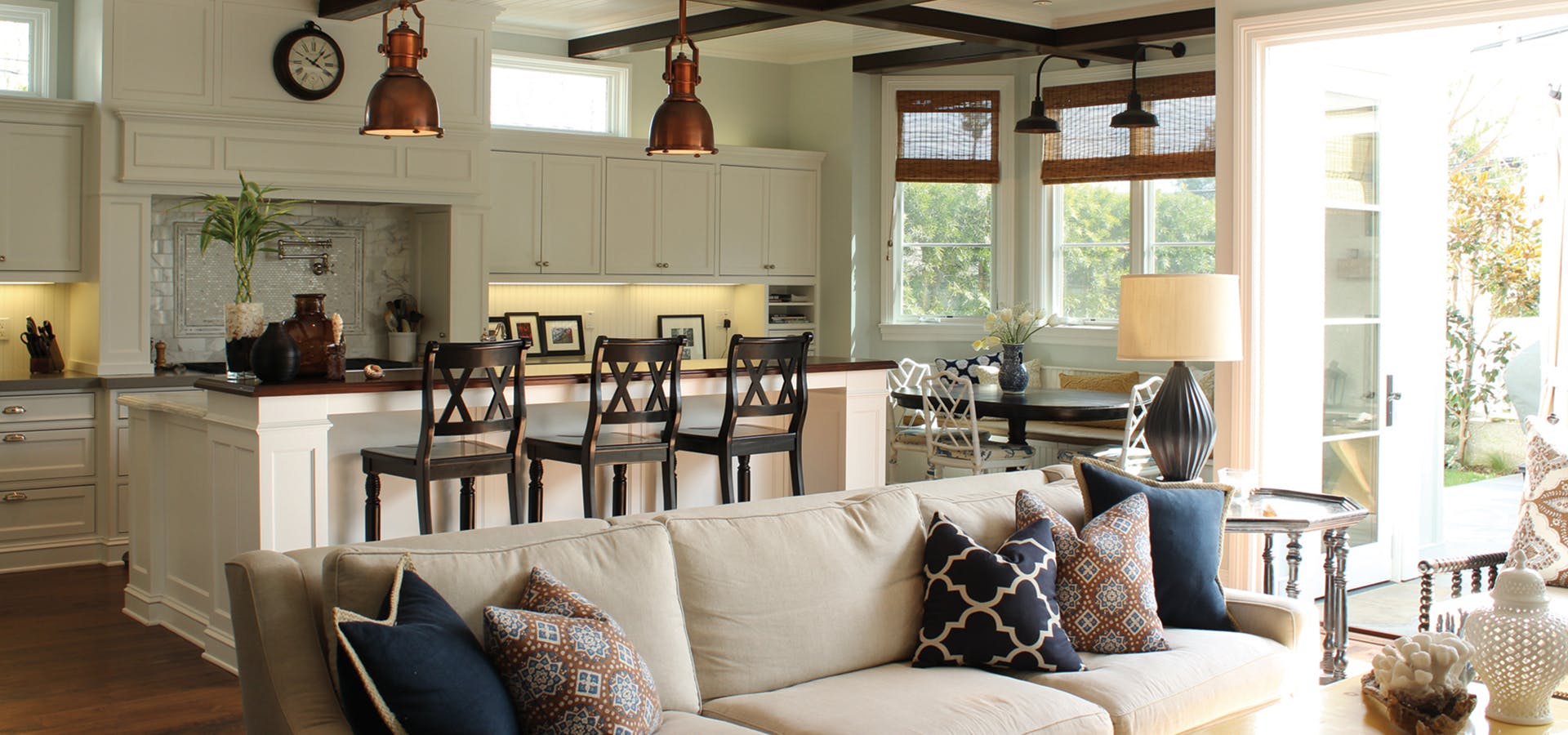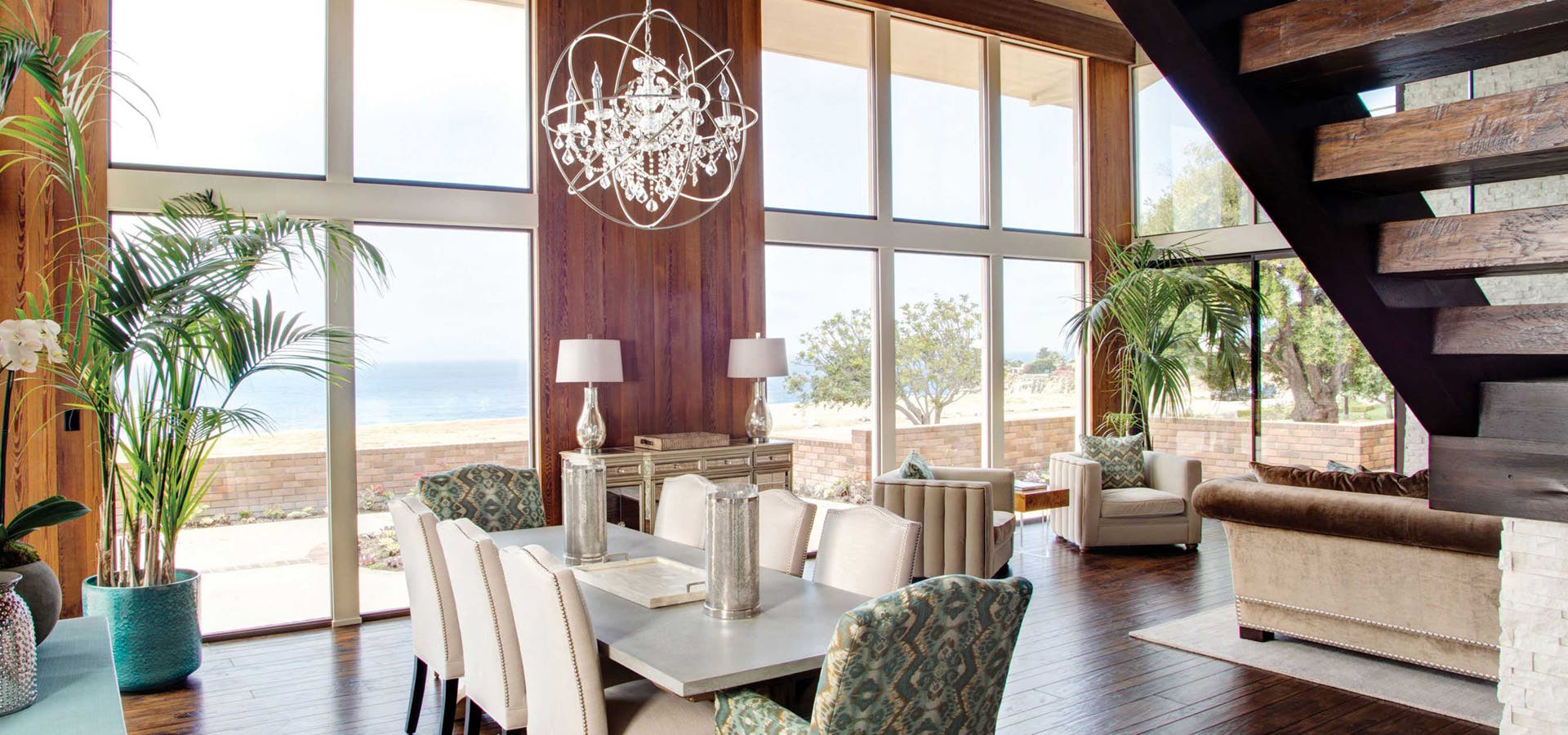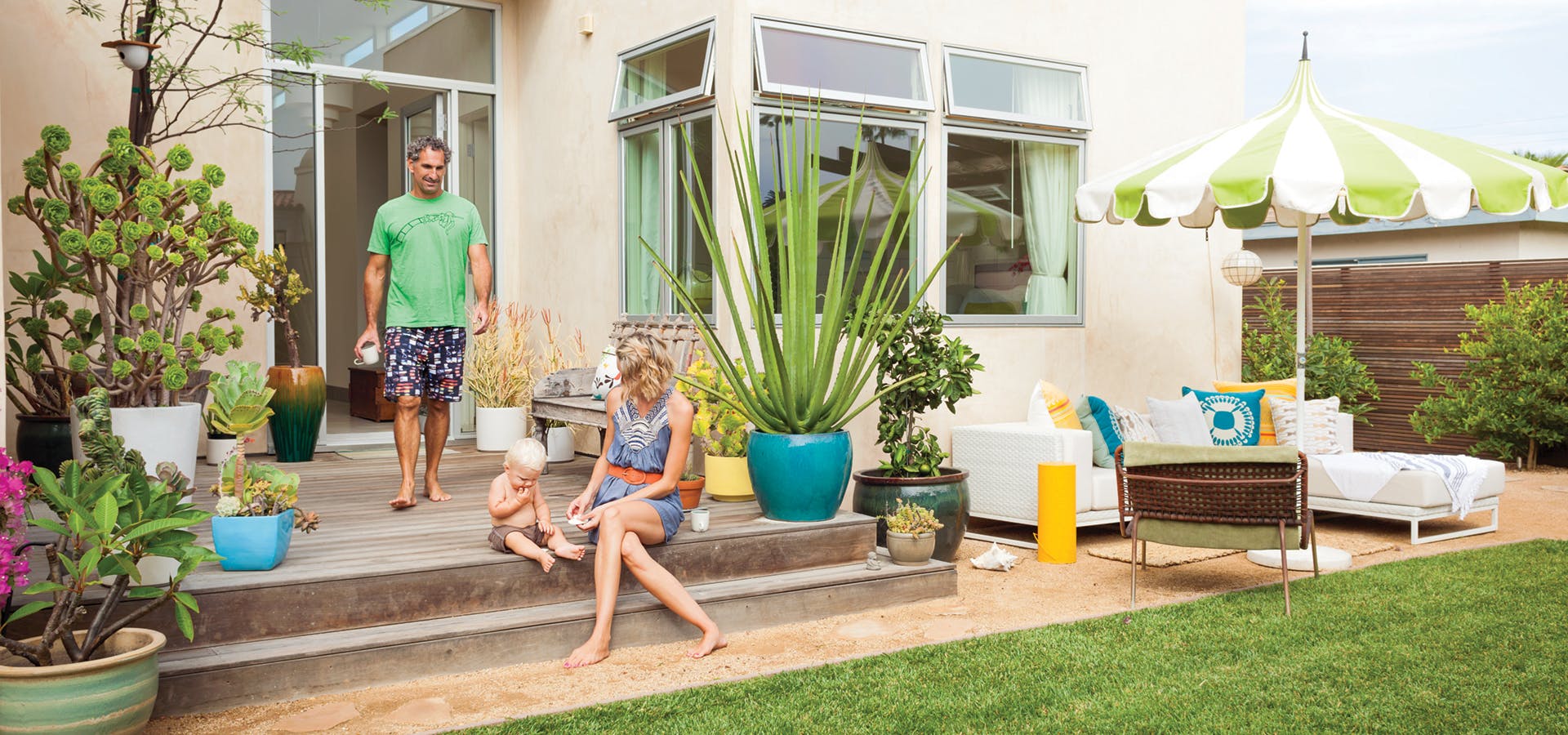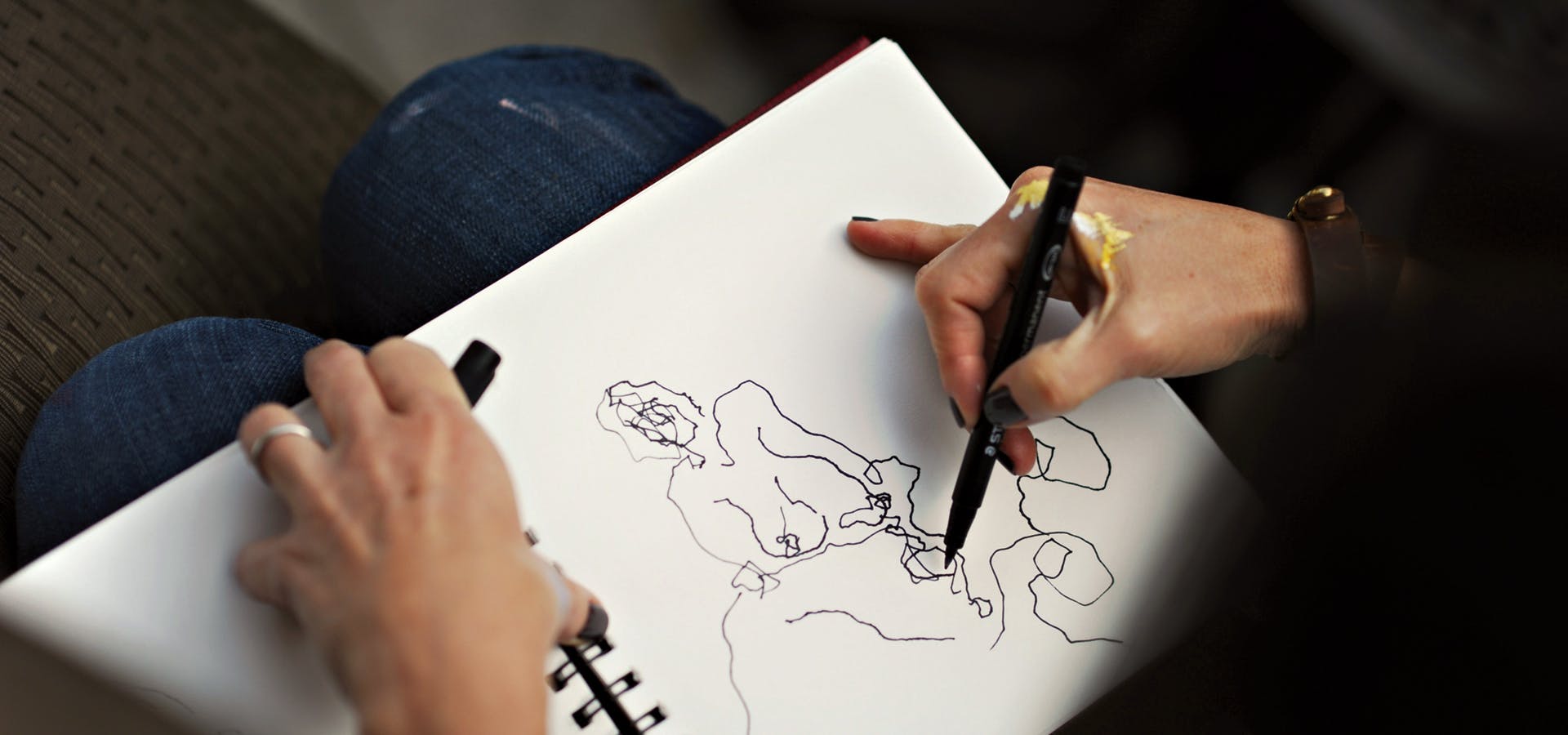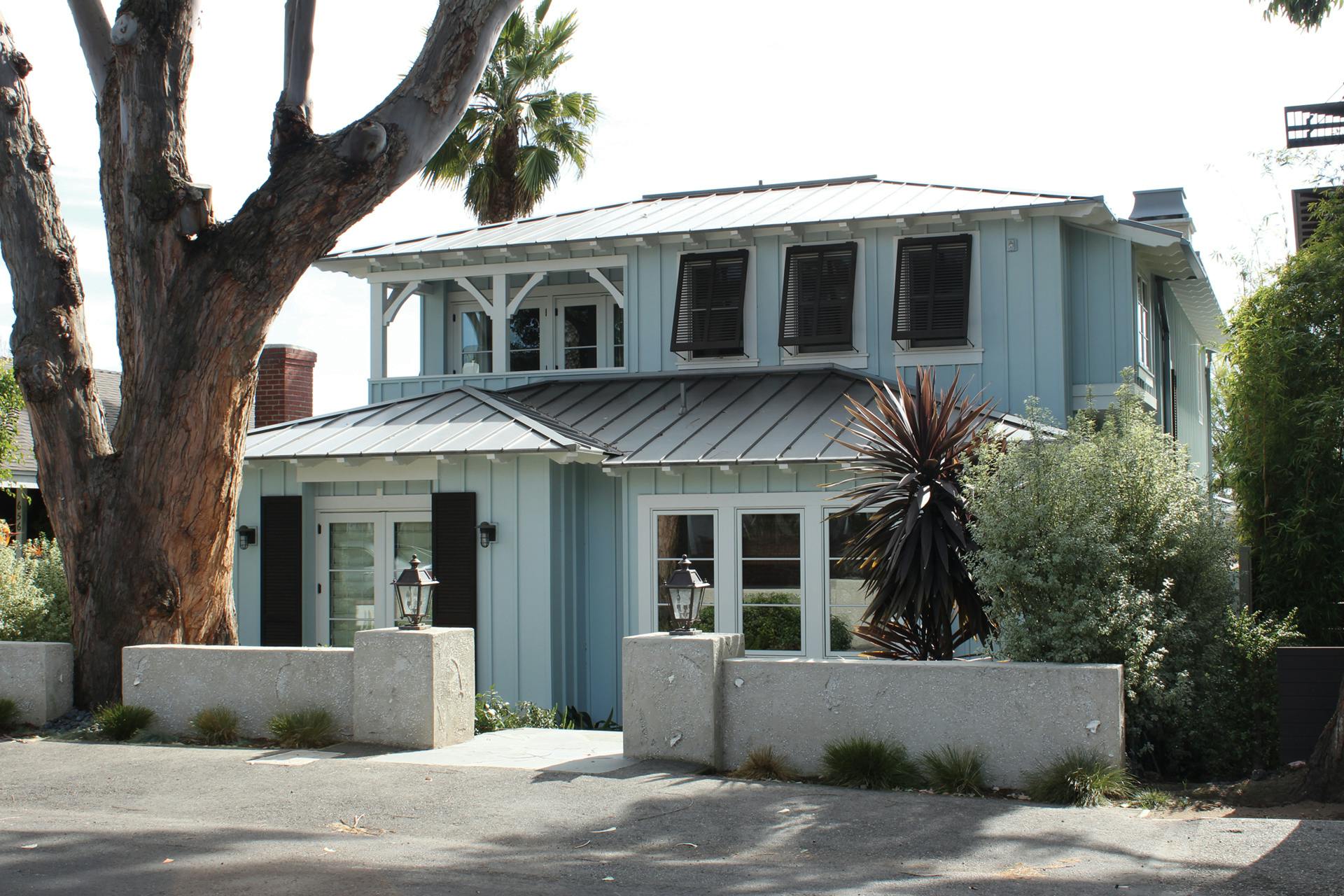
When Tricia Strickfaden of Manhattan Beach opened an issue of Coastal Living magazine in 2004, she was immediately smitten with a house newly constructed on Hilton Head Island, South Carolina. Both the architecture and the sense of light captivated her enough to recreate the house in Manhattan Beach, where she lives with her husband, Chris, and their children, Shelby and Camden. When the Strickfadens decided to tear down their existing house and build a home that would accommodate many design elements found in the Low Country, they plunged head-first into the project by flying to Hilton Head to see the environment and the home that had inspired her.
Armed with a background in interior design and fine art, Tricia was well-prepared to create a home that would allow wonderful, light-filled spaces in a casual living style reminiscent of the Low Country. After several years of researching the Low Country style, the Strickfadens began the project in 2008—with architect Douglas Leach, builder Jay Patrick and Suzanne Ascher of Waterleaf Interiors—to design a home that combines elements of both the Low Country and the Caribbean. From the Dutch door entrance to the dark walnut floors to the tabby fireplaces, many key architectural elements of the house echo design elements of 19th-century homes on the Atlantic coast.

For the last 13 years, Tricia has been actively pursuing a career in painting oils of abstract landscapes in a fresco technique, using both a palate knife and brush. As a resident of the South Bay for two decades, Tricia is most familiar with the clear light and huge crashing waves of the Pacific coast. However, once she visited Hilton Head, she experienced the mesmerizing light of the Low Country. Unlike the brilliant sunsets of the Pacific coast, the Low Country has a suffused light that blankets the area in layers of dusty colors. Tricia now paints landscapes of both the pronounced, dramatic Southern California coast as well as the more subtle Carolina Low Country, where the marshes, abundant wildlife and transfused colors define the area.
One of the many requirements Tricia had for her Manhattan Beach house was a studio. She spends several hours a day in her all-white studio, working on up to three paintings at any one time. She frequently works from photos she takes and then creates 12-inch studies before tackling the subject on a larger canvas. The result is a carefully created landscape that perfectly captures the essence of the chosen coast.
Whether by intent or innate creative inclination, Tricia’s home is a perfect stage for her paintings. The soft sage greens, slate blues and many shades of white mix with pops of color that mirror her paintings, which decorate every room. Bedrooms are colorful, but in a quiet and understated way that envelops one into a cocoon. Particularly mesmerizing is the master bedroom, where an Indian throw on the bed perfectly picks up the colors in the bold painting above the bed. The dining room is commanded by a fabulous chandelier made from capiz shells, while two different styles of dining chairs give the room character as well as comfort. The soft palate is offset by hand-scraped, dark walnut floors and beams in the kitchen, family room and master bedroom ceilings.
Like many homes of the South Bay, Caribbean and Low Country, much of the Strickfadens’ lifestyle takes place outdoors. With a newly constructed outdoor living area right off the inviting kitchen, the home flows beautifully to accommodate both easy family living and entertaining. Although the rooms of the house are not large, they are a perfect study in scale, proportion and balance. Quality details, such as inlaid floor beams in entrance areas, tile installed to look like beadboard in the bathrooms and large custom windows and doors, send a message of quiet sophistication.
However, it is the attention to the tabby construction that truly identifies the Strickfaden home as one built in the Carolina Low Country vernacular. Tabby construction was widely used in the 18th and 19th centuries in the Carolina coastal regions because it is impenetrable to water and bugs and lasts for centuries. It is a material made from crushed oyster shells and the abundant lime of the Piedmont region that made it an easy and inexpensive building solution.
Today one can still visit the remains of homes created from tabby, and it is used throughout Savannah and Charleston in driveways, porches and other architectural elements. Although tabby is not a familiar building material in the South Bay area, they were able to create a very similar product to use for the construction of the fireplaces as well as some parts of the home’s exterior.
The Strickfaden home is a South Bay study in the Low Country lifestyle. It flows gracefully from one space to another, ever changing in the subtle shifts of light throughout the day. It is a home that is open, casual and inviting in the Southern vernacular, where life moves at a slower pace, and a deep appreciation of the environment, history and generations of family traditions define lifestyle.
Currently Tricia Strickfaden is aggressively expanding her position in the California art market. She sells directly from her home via her website www.tsmodernart.com.
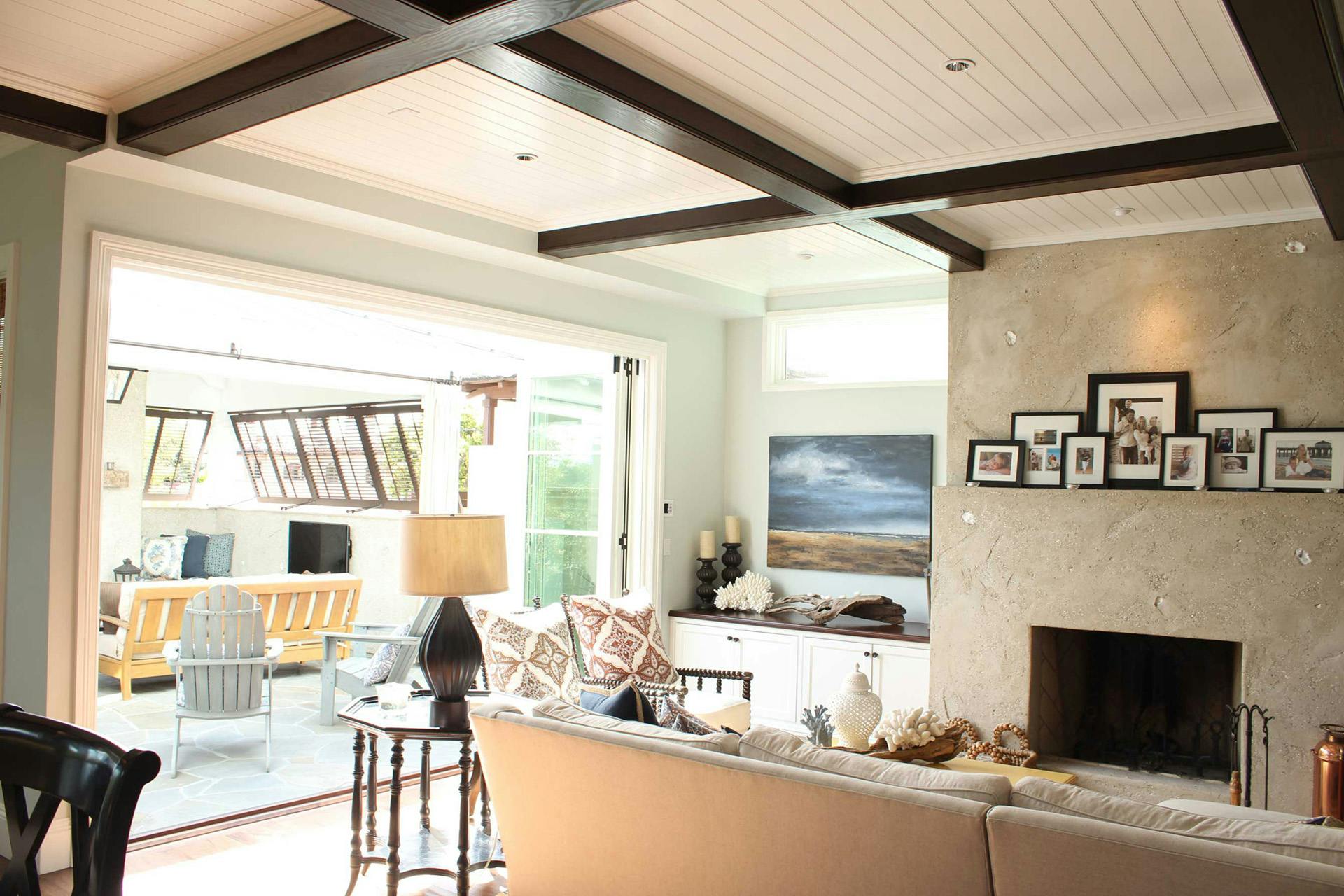
A painter recreates the insouciant Carolina Low Country in a tucked-away section of Los Angeles.
Spanish moss envelops century-old river oaks and drips from massive branches, while briny salt water from the marshes hangs heavy in the air. Huge sand dunes protected by a barrier of tall sea oats block the ocean from the land, while long stretches of empty beach hold sand dollars and starfish that wash up with the gentle waves. Houses have long, deep porches; tabby construction; hand-hewn, wide-plank, heart pine floors; and opposing windows and doors that permit maximum light and ocean breezes. Such are the distinctive elements that define the sultry, languid coast of the South Carolina Low Country.
 When Tricia Strickfaden of Manhattan Beach opened an issue of Coastal Living magazine in 2004, she was immediately smitten with a house newly constructed on Hilton Head Island, South Carolina. Both the architecture and the sense of light captivated her enough to recreate the house in Manhattan Beach, where she lives with her husband, Chris, and their children, Shelby and Camden. When the Strickfadens decided to tear down their existing house and build a home that would accommodate many design elements found in the Low Country, they plunged head-first into the project by flying to Hilton Head to see the environment and the home that had inspired her.
When Tricia Strickfaden of Manhattan Beach opened an issue of Coastal Living magazine in 2004, she was immediately smitten with a house newly constructed on Hilton Head Island, South Carolina. Both the architecture and the sense of light captivated her enough to recreate the house in Manhattan Beach, where she lives with her husband, Chris, and their children, Shelby and Camden. When the Strickfadens decided to tear down their existing house and build a home that would accommodate many design elements found in the Low Country, they plunged head-first into the project by flying to Hilton Head to see the environment and the home that had inspired her.
Armed with a background in interior design and fine art, Tricia was well-prepared to create a home that would allow wonderful, light-filled spaces in a casual living style reminiscent of the Low Country. After several years of researching the Low Country style, the Strickfadens began the project in 2008—with architect Douglas Leach, builder Jay Patrick and Suzanne Ascher of Waterleaf Interiors—to design a home that combines elements of both the Low Country and the Caribbean. From the Dutch door entrance to the dark walnut floors to the tabby fireplaces, many key architectural elements of the house echo design elements of 19th-century homes on the Atlantic coast.
For the last 13 years, Tricia has been actively pursuing a career in painting oils of abstract landscapes in a fresco technique, using both a palate knife and brush. As a resident of the South Bay for two decades, Tricia is most familiar with the clear light and huge crashing waves of the Pacific coast. However, once she visited Hilton Head, she experienced the mesmerizing light of the Low Country. Unlike the brilliant sunsets of the Pacific coast, the Low Country has a suffused light that blankets the area in layers of dusty colors. Tricia now paints landscapes of both the pronounced, dramatic Southern California coast as well as the more subtle Carolina Low Country, where the marshes, abundant wildlife and transfused colors define the area.
One of the many requirements Tricia had for her Manhattan Beach house was a studio. She spends several hours a day in her all-white studio, working on up to three paintings at any one time. She frequently works from photos she takes and then creates 12-inch studies before tackling the subject on a larger canvas. The result is a carefully created landscape that perfectly captures the essence of the chosen coast.
Whether by intent or innate creative inclination, Tricia’s home is a perfect stage for her paintings. The soft sage greens, slate blues and many shades of white mix with pops of color that mirror her paintings, which decorate every room. Bedrooms are colorful, but in a quiet and understated way that envelops one into a cocoon. Particularly mesmerizing is the master bedroom, where an Indian throw on the bed perfectly picks up the colors in the bold painting above the bed. The dining room is commanded by a fabulous chandelier made from capiz shells, while two different styles of dining chairs give the room character as well as comfort. The soft palate is offset by hand-scraped, dark walnut floors and beams in the kitchen, family room and master bedroom ceilings.
Like many homes of the South Bay, Caribbean and Low Country, much of the Strickfadens’ lifestyle takes place outdoors. With a newly constructed outdoor living area right off the inviting kitchen, the home flows beautifully to accommodate both easy family living and entertaining. Although the rooms of the house are not large, they are a perfect study in scale, proportion and balance. Quality details, such as inlaid floor beams in entrance areas, tile installed to look like beadboard in the bathrooms and large custom windows and doors, send a message of quiet sophistication.
However, it is the attention to the tabby construction that truly identifies the Strickfaden home as one built in the Carolina Low Country vernacular. Tabby construction was widely used in the 18th and 19th centuries in the Carolina coastal regions because it is impenetrable to water and bugs and lasts for centuries. It is a material made from crushed oyster shells and the abundant lime of the Piedmont region that made it an easy and inexpensive building solution.
Today one can still visit the remains of homes created from tabby, and it is used throughout Savannah and Charleston in driveways, porches and other architectural elements. Although tabby is not a familiar building material in the South Bay area, they were able to create a very similar product to use for the construction of the fireplaces as well as some parts of the home’s exterior.
The Strickfaden home is a South Bay study in the Low Country lifestyle. It flows gracefully from one space to another, ever changing in the subtle shifts of light throughout the day. It is a home that is open, casual and inviting in the Southern vernacular, where life moves at a slower pace, and a deep appreciation of the environment, history and generations of family traditions define lifestyle.
Currently Tricia Strickfaden is aggressively expanding her position in the California art market. Her pieces can be found in Tim Clark’s gallery in Santa Monica, and she sells directly from her home via her website TSModernArt.blogspot.com.
A painter recreates the insouciant Carolina Low Country in a tucked-away section of Los Angeles.
[tribulant_slideshow gallery_id=”27″]





